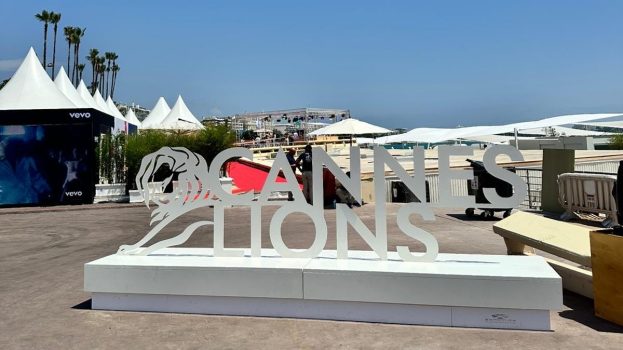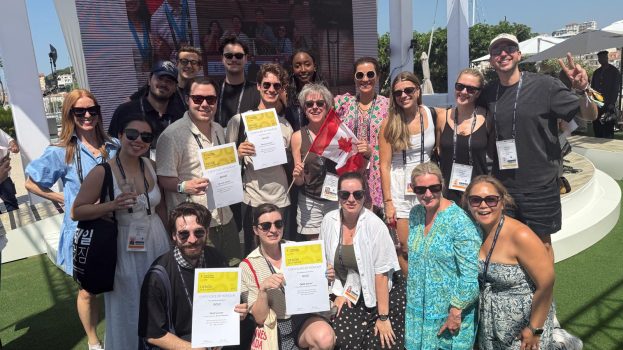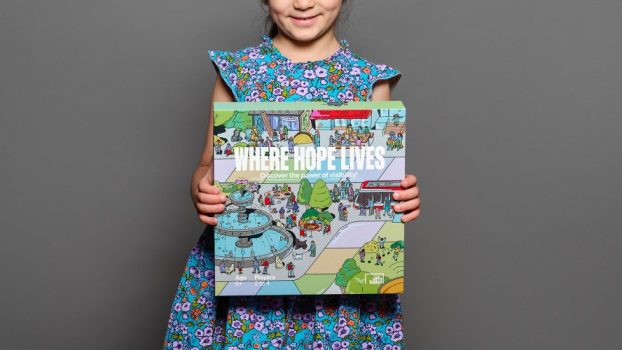By Ece Inan and Sean Bell
As the ChatGPT hype cycle spins into high gear, another emerging technology might be more relevant to the everyday work of marketers in 2023.
Augmented reality is poised to evolve past a lower-funnel tactic or campaign extension into a core format alongside video and audio. We’ve built more than 80 AR experiences over the past three years and have learned a thing or two about creating memorable interactions in the format.
It’s easy to get distracted by debates about the future iterations of this technology and lose sight of the fact that hundreds of millions of people use AR every day on their phones. Consumers are making it clear that they’re comfortable using the tech on ad-supported platforms not just to try products but to play games, interact with new worlds, and express themselves. Repeat usage is one signal of this shift, with 54% of mobile AR users in the US saying they use it at least weekly. Entertainment companies seem to be betting on the trend continuing as well. Disney debuted its first AR-enabled film in 2022 and plans to launch a mobile game this year. The CEO of Electronic Arts signalled a similar move at a Goldman Sachs conference last fall.
Last year, there was a drumbeat of brands driving trial in large numbers using augmented reality. Walmart inspired consumers to test out furniture products in their homes 161 million times. Amazon launched a scaled, AR strategy for eyewear. Similar efforts were successful in clothing, cosmetics, and footwear, as brands integrated their catalogues with ad-supported platforms. As compelling as the lower-funnel applications are, they represent just one of the opportunities presented by AR.
Advertisers have an opportunity to make consumers the star of their brand story and carve out a place in their minds. As always, creative execution is a difference maker. Most of the time, success lies in the incentive structure for the person on the other side of the lens. Our production arm Zulubot has spent a lot of time building participatory layers into creative ideas, and we have come up with some guiding principles.
Show progression towards a goal
Rewarding your audience early and often for staying engaged in the experience increases your odds of success dramatically. In the “Star in AR” filter we created for Young People’s Theatre, we dropped audiences into a play and challenged them to unlock each act of the story. Teasing what comes next and paying off each chapter generated a 6.3% lift in recall on Instagram.
For our Campbell’s Goldfish “Focus Faceoff” lens, we created a game mechanic using facial mapping to challenge our audience to tune out the noise. In this case, we tapped into their competitive spirit to get them locked in on the product while distractions (such as message and alarm notifications) attempted to knock them off course. This experience delivered a 103% increase in playtime compared to Snap’s average. Giving audiences an early sense of success or failure keeps them in an active state while they interact with your brand.
Create reciprocity in the experience
Use voice, movement and other triggers to give your audience persistent feedback.
In McDonald’s World Cup lens, we used multi-language voice recognition to help audiences show the flag for their country as the tournament got underway. This showed recognition of their native tongue and an immediate payoff to help them root for their favourite team.
For the Subaru BRZ “Ignite Your Senses” campaign, we created a racing game that leveraged a multi-point system with an escalating degree of difficulty to show off the performance of the car. We built persistent storage into the game to log high scores and encourage replays to beat personal bests This resulted in an average playtime of 17 seconds, beating auto benchmarks by 113%. The sum is greater than its parts when it comes to these tactics as the audience is left feeling empowered.
Consumer attention has always been elusive. Understanding the gap between viewability and attention is critical in ensuring memorability and effectiveness in more commoditized formats like video and audio. If we can lean into AR in our creative strategy alongside these types of formats, we can unlock additional connections with people. It’s widely used, trafficable to most ad-supported platforms and potentially more effective in building space in people’s minds. And it’s very likely to become a bigger part of our daily lives and media habits as developer tools get more robust and new hardware products gain traction.
So don’t get distracted by overused and under-specified words like “the metaverse” or Apple’s lurking headset launch: AR can help brands create new memories today.
Ece Inan is director of interactive production at Zulubot
Sean Bell is executive strategy director at Zulu Alpha Kilo
























